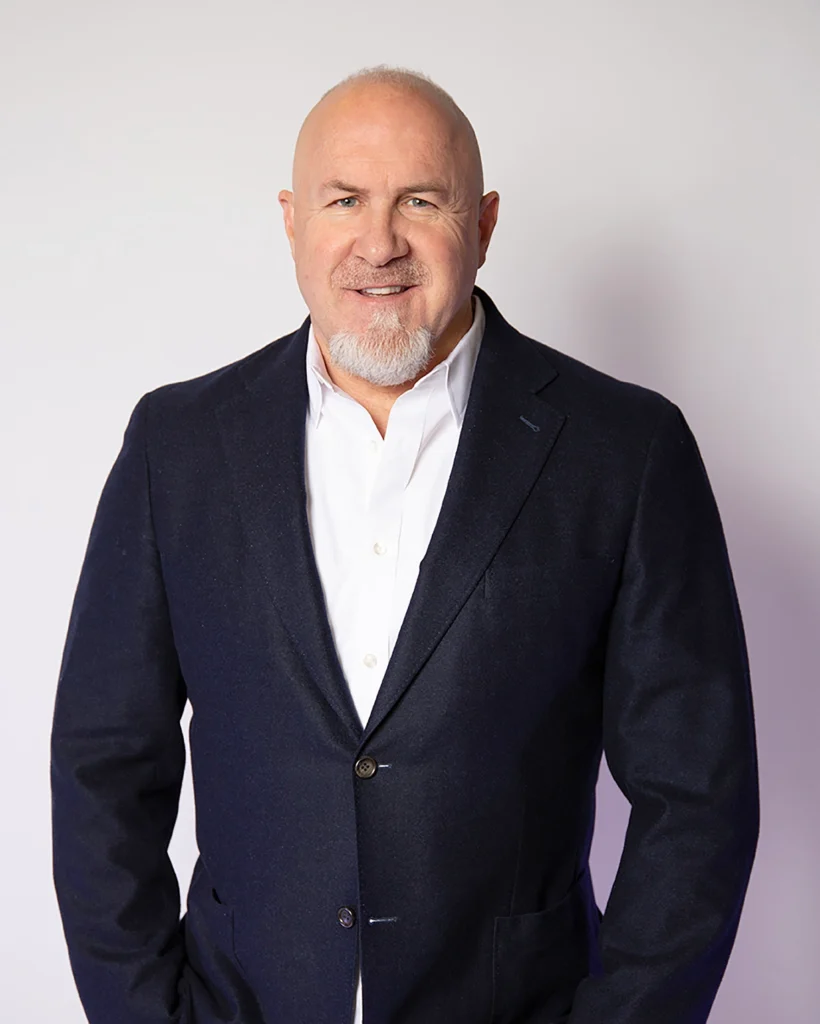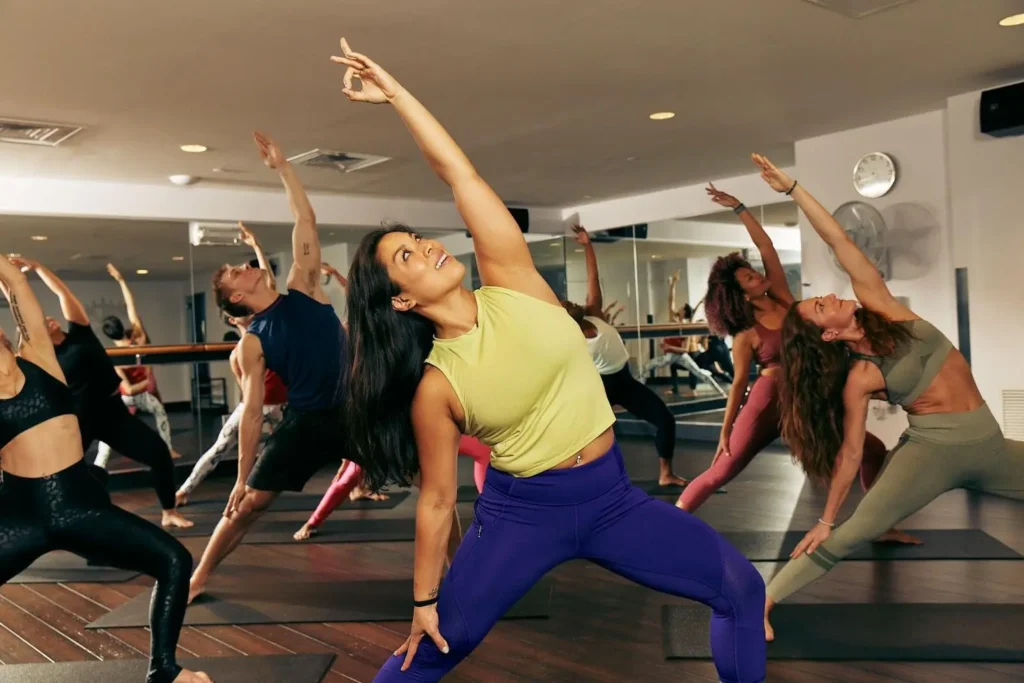Featured on Franchise Corner
View More
How Crunch Is Building for a New Era of Fitness

With over 450 gyms and more to come, Crunch CEO Jim Rowley dishes on the brand’s approach to fitness and franchising in 2024 and beyond
Crunch Fitness has come a long way since Doug Levine founded the brand out of a basement in New York City’s Greenwich Village neighborhood back in 1989, but the company hasn’t forgotten its roots as it’s expanded across the globe.
With more than 450 locations open, 1,400 franchise licenses sold and over 2 million members, Crunch Fitness is in a high-growth phase. However, the brand still abides by its original “No Judgements” philosophy of making fitness fun and accessible.
Thirty-five years ago, that meant creating gyms that didn’t scare people off in an era when fitness was far more hardcore and much less mainstream than it is today. In 2023, that’s still important, but Crunch’s conception of what “no judgements” means has evolved into also providing all the amenities, modalities and tools its members need to have a great experience, in whatever form that may take.
“The big thing for us is to meet our members, or potential members, where they are,” Crunch CEO Jim Rowley says of the company’s philosophy as it expands.
Rowley spoke with Athletech News about how Crunch designs its gyms in the modern era, the way it’s approaching digital fitness content and what’s in store for the company as it continues to expand.
Open Floor Plans Are In, But So Is Community
It’s no secret that gyms are becoming more open, with large, turf-filled functional training areas increasingly taking the place of cardio and single-use weight machines.
“The gym of today is so much different than the gym of five years ago, it’s incredible,” Rowley says. “Today’s gym-goer wants more free space and in that free space, they might bring their iPhone or their iPad and do a digital workout. They’re going to bring bands, dumbbells and kettlebells – different workout elements – and they’re going to work out in this tight, little space within a big, open space.”

In this new era, one of the biggest challenges for gyms is finding ways to give members the open space they desire while still fostering a sense of community at a brick-and-mortar location.
For gym owners who naturally want to maximize every square foot of their facility, opening up the floor and removing equipment may seem counterintuitive. But the Crunch team is working with its franchisees to design creative layouts that leverage open space for the benefit of members, which in turn boosts business.
“That includes a lot more Olympic weightlifting racks, relax-and-recover areas, and open space that works for the members,” Rowley says. “It’s lighting that allows them to be socially connected as well, because lighting is critically important when you’re filming yourself or taking a selfie you want to share on your social pages.”
Group Fitness Remains Vital
The increased emphasis on open space in modern gyms isn’t to say that closed-door group exercise classes are fading in popularity. Rowley says Crunch is as committed as ever to its group fitness offerings, which include a large catalog of proprietary classes that range from strength training to Pilates to boxing.
“We’ve (also) been spending a lot of time and energy on the meditative state and breathwork, and doing things that are about reducing your stress, improving your lifestyle and so forth,” Rowley adds of Crunch’s approach to group fitness.

Embracing Digital Fitness
While Crunch’s brick-and-mortar franchise business is thriving, the company is also investing heavily in digital fitness content. In early 2023, the brand launched Crunch+, an on-demand and live streaming platform that offers users access to a range of fitness and wellness classes including HIIT, yoga, cardio boxing, stretching, Pilates and meditation. Crunch is also creating short-form digital fitness content to reach members who are pressed for time but don’t want to miss their daily workout.
The idea behind Crunch+ isn’t to replace the traditional in-person experience but to supplement it with additional fitness and wellness content for members who can’t get to the gym.
“If we can increase (members’) workout volume by one to two times per week, when they’re at home on a Saturday or Sunday afternoon, or on a rainy Monday morning, that’s all we’re looking for,” Rowley explains. “It’s a complement. We don’t look at it as replacing anything in terms of brick and mortar.”
However, with the digital platform, Crunch is also looking to reach consumers who don’t work or live near a physical location.
“If you don’t have a Crunch near your home or work, we’d like you to participate with our brand digitally, because we’re coming to your town over the next couple of years. We’ve got another 1,000 of these plots to open,” Rowley says, noting Crunch’s many signed franchise agreements for additional gym locations.
Breaking New Ground With Amazon
The gym of the future also figures to be tech-enabled. Crunch seems to already have a leg (or hand) up on its competitors in this area. Earlier this year, the fitness brand made waves when it partnered with Amazon One to allow members at select Crunch locations to swipe their palm over a biometric reader to enter the facility rather than use a key fob.
That type of keyless entry tech has been trialed at Whole Food Markets and sports venues, but never before at a fitness facility.
“I was a little concerned in the beginning that we were too small for this behemoth of a company, but they’ve treated us like we’re the biggest company in the world,” Rowley says.” There’s a true partnership with Amazon, and the spirit of that partnership is displayed in how they’ve rolled out the Amazon One product in our clubs side by side with us.”

For Crunch, it’s another instance of meeting members where they are.
“It’s for the safety and security of the members, but it also allows us to run smarter in the gyms in terms of allowing members to have access, so that the person working the front desk can really be at the forefront of member service,” Rowley notes.
Crunch and Amazon plan to bring the hand-entry tech to more gyms in 2024.
“I would look at 2023 more as a test of what’s possible, and 2024 as a full rollout with Amazon,” Rowley shares.
What’s Next for Crunch
In 2024, Crunch will celebrate the 35th anniversary of its founding in 1989, but in some ways, the company is just getting started. It only began franchising in 2010, and has been on an expansion tear ever since, opening over 450 locations across the country, with a growing presence in the Southeast and Southwest in particular. Thanks to that success, Crunch earned a spot as the top-ranked fitness brand in Entrepreneur magazine’s 2024 Franchise 500 list, which ranks companies based on factors including growth, brand power and financial stability.
With more than 1,400 franchise licenses sold, a lot more Crunch gyms are in the pipeline
“Our plan for 2024 is to increase our growth rate probably by 20 to 25%,” Rowley says. “It’s going to be the biggest year of our company.”
Crunch is also aiming to reach 3 million total members at some point in 2024.
Looking even further ahead, given its current sales numbers, Rowley believes Crunch could one day reach 1,500 locations in the U.S., and double or triple that number when taking international expansion into account. (Crunch already has a presence in Canada, Spain, Portugal, Costa Rica and Australia).
As Crunch continues to pursue its expansion plans, Rowley has some friendly advice for onlookers.
“Hold on to your hat for what you’re going to see in the next five years,” he says.



